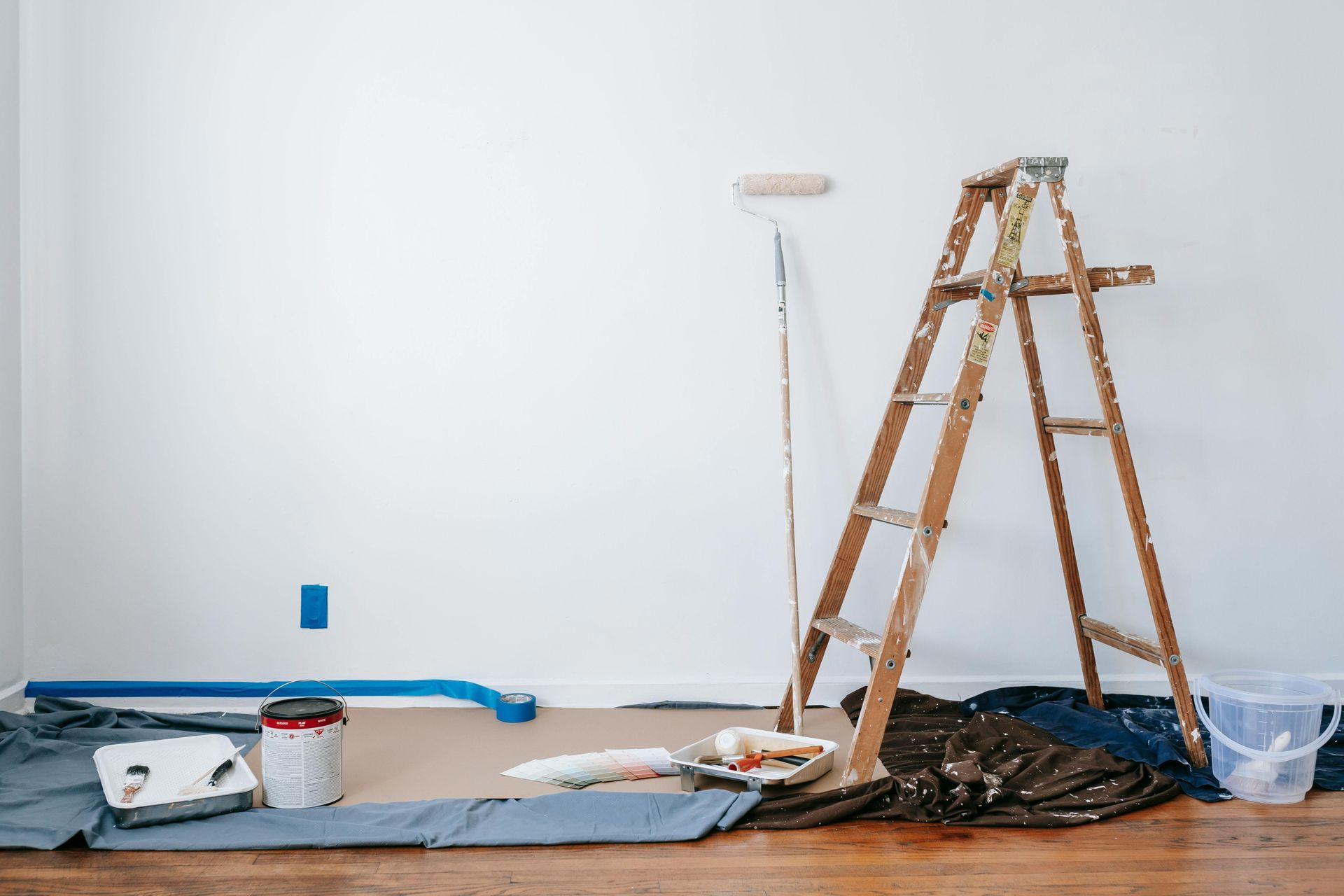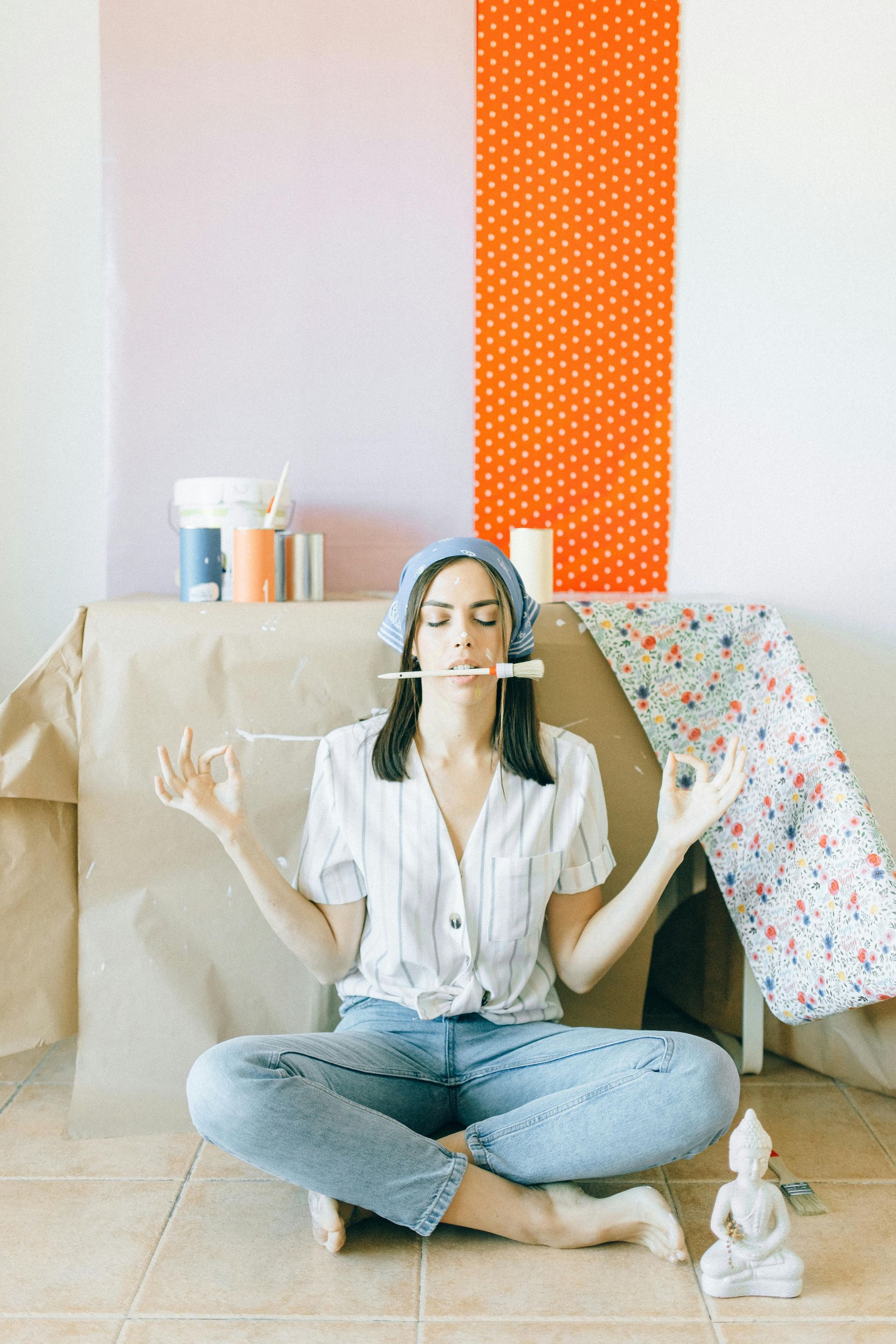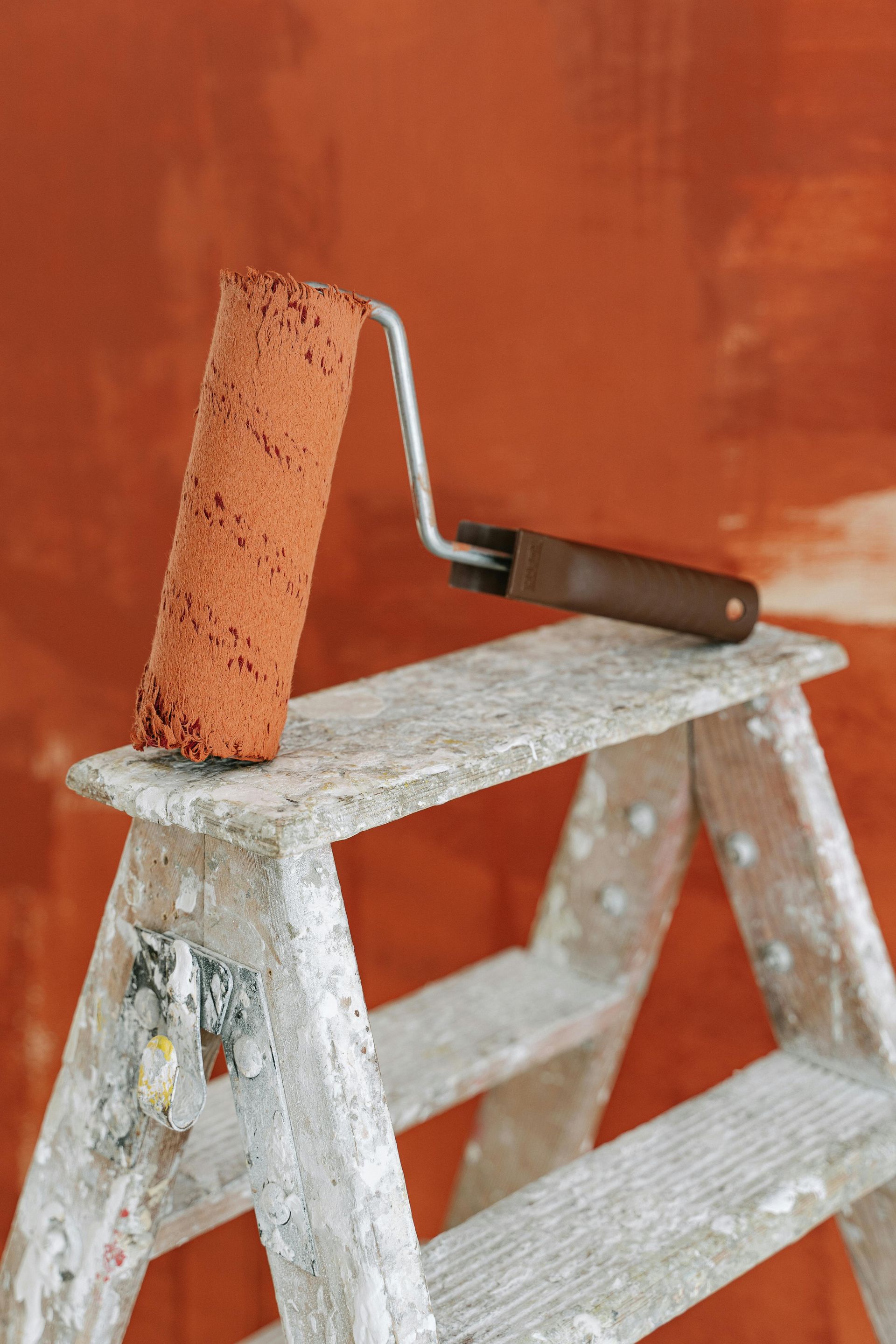Interior vs. Exterior Painting: Key Differences and Best Practices
Surface Preparation: A Tale of Two Environments
The first—and perhaps most crucial step in any painting project is surface preparation; this is where interior and exterior projects begin to differ.
Inside the home, prep work tends to focus on detail. Walls are generally clean, dry, and temperature-controlled, making conditions more predictable. Prep for interior painting usually involves patching holes or cracks in drywall, sanding rough spots, cleaning off dust or grease, and taping off trim and baseboards for sharp lines. If the surface is glossy or previously painted with oil-based paint, it might require light sanding or a bonding primer to ensure adhesion.
Exterior prep, on the other hand, is a much more rugged endeavor. Outdoor surfaces face constant exposure to the elements—rain, sun, humidity, wind, and pollutants all leave their mark. As a result, exterior painting requires a more aggressive approach. Surfaces often need power washing to remove dirt, mildew, and flaking paint. Cracks or damage in wood or stucco must be repaired, and bare surfaces may require priming to help paint bond and last. Weather conditions also play a significant role: a sudden rainstorm or painting in direct sunlight can ruin an exterior job, so timing and planning are everything.
Ultimately, while both types of painting demand care and attention, exterior prep work requires more muscle, flexibility, and a good eye for weather forecasting.
Choosing the Right Paint for Durability and Longevity
When selecting paint, it’s easy to be lured by color swatches or brand names, but it’s the quality of the contents that matters most. Paint made for interiors and exteriors differs in key ways—using the wrong one in the wrong space can lead to premature peeling, fading, or worse.
Interior paints are designed with appearance and indoor conditions in mind. They’re formulated to resist stains, be easy to clean, and emit fewer odors or VOCs (volatile organic compounds), making them safer for enclosed spaces. These paints also have a softer finish overall—perfect for the aesthetics of living rooms, kitchens, and bedrooms.
By contrast, exterior paints are built to withstand the elements and provide long-lasting protection. They contain additives that help them resist fading from UV rays, prevent mold and mildew growth, and endure extreme temperatures and moisture. They’re typically more flexible, allowing them to expand and contract with the building materials beneath them, especially in climates with dramatic temperature shifts.
One common mistake is using leftover interior paint for an exterior touch-up or vice versa. Not only will it fail to perform as needed, but it can also void the manufacturer’s warranty and shorten the life of your paint job.So, when choosing paint, always prioritize performance over price—especially for exteriors. A quality paint product may cost more upfront, but it will save you in labor and repaints down the line.

Common Mistakes to Avoid Inside and Out
It's common for painters to gloss over seemingly insignificant missteps, but they can add up to big disappointments. Each environment presents its unique challenges, and being aware of these can save you from headaches and costly redos.
A typical error in interior painting is skipping the prep or underestimating its importance. People often jump into painting without cleaning the walls, removing dust, or sanding imperfections. Another frequent oversight is using the wrong finish. While matte or eggshell finishes are popular for bedrooms and living rooms, they’re not ideal for high-traffic areas like kitchens or bathrooms where scrubbing is necessary. Satin or semi-gloss finishes work better there, offering easier cleaning and better moisture resistance.
The most damaging mistake for exterior painting is painting in poor weather. Humidity, rain, or extreme heat can ruin the finish or prevent paint from adhering well. Additionally, applying paint to a surface that hasn’t completely dried after power washing or rain is a recipe for bubbling and peeling.
Another misstep is neglecting to prime where necessary. Bare wood, patched stucco, or rust-prone metal areas need the correct primer to ensure durability. Also, while using spraying techniques can speed up your project, it’s no substitute for detailed brushwork in tricky areas like trim, eaves, and corners—cutting corners here almost always shows in the final result.
Lastly, whether inside or out, patience is everything. Rushing between coats or applying too thick a layer of paint can lead to streaks, drips, and uneven coverage.
Putting It All Together
Painting might seem like a simple task, but knowing the differences between interior and exterior projects reveals just how technical and nuanced it is in reality. From preparation to product selection, each step requires a thoughtful approach—and skipping over those considerations can drastically shorten the life of your paint job.
Interior painting thrives on detail and finesse. It’s about clean lines, crisp edges, and creating an inviting atmosphere that reflects personal style. Exterior painting, on the other hand, is all about resilience. It has to look good, yes—but more importantly, it must protect your home against the elements and stand the test of time.
Whether your project is a weekend DIY project or you are hiring professional house painters, understanding the distinctions between interior and exterior painting will help you make smarter decisions and achieve better results.
If you're unsure where to start or want peace of mind with expert execution, don’t hesitate to call in the pros. Here at Paint & Prosper, we believe that knowledge is power—and the right team, paired with the best insights, can turn any painting project into a true success story.



